Toxins That Can Help Us
Over many years, well-regarded AESF/NASF contributor Jack Dini wrote a series of fascinating columns to Plating & Surface Finishing, under the title Fact or Fiction?. He hasn’t slowed down in 2021. Here, he notes that more research studies are revealing that a little bit of some toxins can be quite helpful to human health. The following shows a number of examples.
by
Jack Dini
Livermore, California, USA
Editor's Note: Over many years, well-regarded AESF/NASF contributor Jack Dini contributed a series of fascinating columns to Plating & Surface Finishing, under the title Fact or Fiction?. He hasn’t slowed down in 2021. A printable version of this article can be accessed HERE.
“Toxins surrounds us. It's not just too much of a bad thing like arsenic that can cause trouble, it's too much of nearly anything. Too much vitamin A, hypervitaminosis, can cause liver damage. Too much vitamin D can damage the kidneys. Too much water can result in hyponatremia, a dilution of the blood's salt content, which disrupts brain heart and muscle function,” reports Cathy Newman.1
However, more and more research studies are revealing that a little bit of some toxins can be quite helpful to human health. The following are a number of examples.
Carbon monoxide
Researchers showed that carbon monoxide (CO) can be used to reverse pulmonary arterial hypertension (PAH), which is caused by uncontrolled proliferation of the smooth muscle cells of the pulmonary arteries - blood vessels that carry blood from the heart to the lungs.2
Hydrogen sulfide
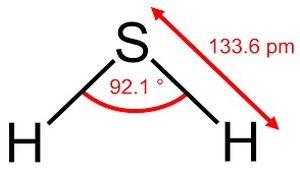
Wikipedia public domain
Besides being an annoyance, hydrogen sulfide (H2S) is highly toxic, being the second most common cause of fatal gas inhalation exposures in the workplace (at 7.7%, second to carbon monoxide at 36%). The health effects are dependent (the dose makes the poison), and at high enough concentrations, the gas can be fatal within seconds. High exposures cause respiratory failure. Lower exposures can cause a variety of symptoms, ranging from irritation to labored breathing and unconsciousness.3
However, hydrogen sulfide is not the devil. Beneath the danger and stench is a molecule as basic and indispensable as sodium chloride. The gas is produced in all of the body's tissues, all the time, regardless of what was for dinner.
Studies have shown that this compound is involved in many physiological functions and may have significant therapeutic applications. Notably, along with nitric oxide and carbon monoxide, H2S is a so-called gasotransmitter.
Mounting evidence indicates that the gas plays a beneficial role in the health of the cardiovascular system and other parts of the body.4
Based on these findings, researchers are developing H2S-based therapies for conditions ranging from cardiovascular disease to irritable bowel syndrome.
Recent research suggests that slower transit time - that is, longer exposure to your nasty stuff, may in fact be of benefit. Hydrogen sulfide appears to prevent inflammation and its sometime consequences, ulcerative colitis and cancer. In rodent studies, the gas has a significant anti-inflammatory effect on the walls of the digestive tract: the opposite of what aspirin does in there. Aspirin and ibuprofen combat inflammation everywhere but the stomach and bowels; there they create inflammation. Used in tandem with hydrogen sulfide, aspirin or ibuprofen may be thousands of times as potent at preventing tumor growth - at least, in mice and in laboratory grown tumor cells. Human trials have not yet begun, reports Mary Roach.4
A physiologic role for H2S in regulating blood pressure raises the possibility that pharmacologic blood pressure enhancement of H2S formation could be an alternative approach for treatment of hypertension.5
Nitric oxide
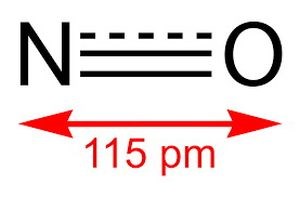
Wikipedia public domain
An unlikely wonder drug is the unstable free radical nitric oxide (NO) gas, which is found in cigarette smoke and smog. Not long ago, no one would have dreamed how important nitric oxide is within our bodies. Now, it is being implicated in everything from memory to blood pressure. Tiny puffs of NO mediate an extraordinary range of biological properties in our bodies, ranging from destruction of tumor cells to the control of blood pressure.6
NO was the first gas to be approved as a drug product. Although oxygen and N2O (laughing gas) have been used medically for many years, they never were subjected to the current rigorous approval process. Most of the anesthetic gases are actually volatile liquids; therefore, NO is unique in the pharmaceutical industry.7
Hydrogen peroxide
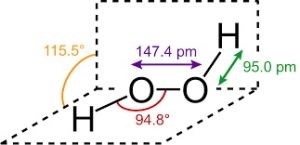
Wikipedia public domain
A report on the use of hydrogen peroxide vapors first deployed in several Singapore hospitals during the 2002 outbreak of severe acute respiratory syndrome, or SARS, and later stocked by several US government agencies in case of an anthrax attack, showed that the enhanced cleaning reduced by 64 percent the number of patients who later became contaminated with any of the most common drug-resistant organisms. Moreover, the researchers found that protection from infection was conferred on patients regardless of whether the previous room occupant was infected with drug-resistant bacteria or not.8
Snake venom
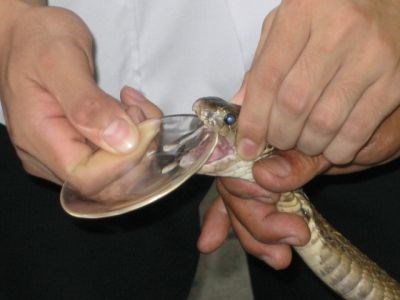
Wikipedia, Barry Rogge, CC by 2.0
Venom - the stuff that drips from the fangs and stingers of creatures lurking on the hiking trails or hiding in the cellar under the wood pile - is nature's most efficient killer. Venom is exquisitely honed to stop a body in its tracks. The complex soup swirls with toxic proteins and peptides - short strings of amino acids similar to proteins. The molecules may have different targets and effects, but they work synergistically for the highest punch. Some go for the nervous system, paralyzing by blocking messages between nerves and muscle. Some eat away at molecules so that cells and tissues collapse. Venom can kill by clotting blood and stopping the heart or by preventing clotting and triggering a killer bleed.9
Ironically, the properties that make venom deadly are also what make it so valuable for medicine. Many venoms target the same molecules that need to be controlled to treat diseases. One of the world's most poisonous snakes might hold the key to new pain therapies in its venom. As ironic as that sounds, a protein component in black mamba venom called “mambalgin” has been shown to act as a pain killer in mice.
Dog saliva

Wikipedia, J. Crosby, Public domain
Dog licks have been considered medically beneficial to humans for millennia. In ancient Egypt, dogs were used in healing practices since they believed that dog licks help heal injury or cure disease. And the French have a saying which translates to “a dog's tongue, a doctor's tongue.”
Research has now shown that dog saliva has its share of the good stuff. In a recent analysis of saliva from Labrador retrievers and beagles, researchers found that canine saliva contains an assortment of antimicrobial enzymes, proteins such as lysozymes and immunoglobulins, and antimicrobial peptides, which tear holes in bacterial cell membranes.10
Warfarin - Rat poison
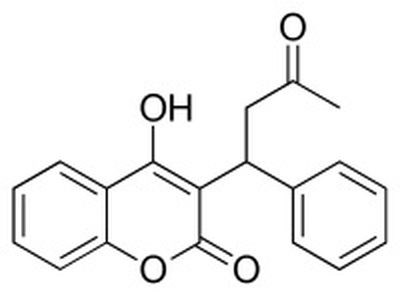
Wikipedia, Public domain
The drug label for a common rat poison called warfarin illustrates the importance of the disclosure statement. Doctors prescribe warfarin for tens of thousands of human patients every year. DuPont sells the drug under the trade name of Coumadin. Warfarin kills rats by blocking the capacity to form blood clots. As a result, the animals hemorrhage and die. Coumadin provides a textbook example that the difference between a poison and a drug is the dose. At the right dose, Coumadin can prevent unwanted blood clots from forming in the blood. After a heart attack, and certain other cardiac events, some individuals are at great risk that the blood may coagulate and form a small clot. If this clot lodges in the brain, the result is a stroke. Clots can also form in the in the lungs, in veins of the legs and other extremities. The drug label of Coumadin describes its ability to prevent clots.11
Frog slime
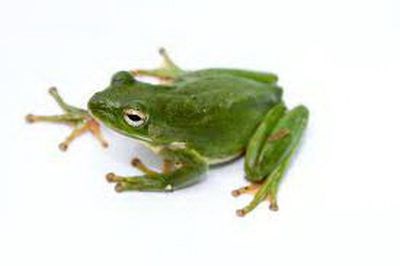
Wikipedia, B. Gratwicke, CC by 2.0
The next flu drug could come from frog mucus. It's not as crazy as it sounds. For decades, scientists have searched for new antiviral drugs by mining proteins that animals produce to protect themselves from microbes. In lab tests, proteins found in amphibian secretions can defend against HIV, herpes and now the flu.12
Epibatidinen is the toxic chemical which a tropical frog arms itself against its predators. Not only is epibatidine very toxic, and the reason it is used by native Indians to make poison, but it also turns out to be a superb painkiller. It is two hundred times stronger than morphine.13
Spider venom

Wikipedia, R. Pineda, CC By-SA 3.0
Part of the search for new medicines has focused on the world's 45,000 species of spiders, many of which kill their prey with venoms that contain hundreds - or even thousands - of protein molecules. Some of these molecules block nerve activity.
New research shows that seven compounds of the countless found in spider venom block a key step in the body's ability to pass pain signals to the brain. The hunt for a medicine based on just one of these compounds, which would open up a new class of potent pain killers, is now a step closer.14
Tilapia
Tilapia is best served with a side of French fries and cabbage, but scientists from Shanghai believe they have discovered an even better use. Collagen extracted from tilapia can be applied as a wound dressing that helps accelerate healing.15
Ocean microbes
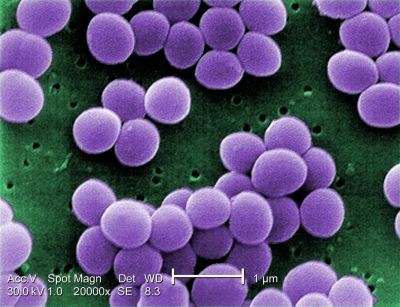
Wikipedia, CDC Public Health Image Library, Public domain
A team from the Scripps Institution of Oceanography at UC San Diego has discovered a new chemical compound from an ocean microbe in a preliminary research finding that could one day set the stage for new treatments for anthrax and other ailments such as methicillin-resistant Staphylococcus aureua (MRSA). The discovery provides the latest evidence that the oceans, and many of its unexplored regions, represent a vast resource for new materials that could one day treat a variety of diseases and illnesses.16
Arsenic
Arsenic poisoning due to contaminated drinking water and industrial pollutants is a serious public health problem in many parts of the world, where it predisposes people to a variety of diseases, including skin, bladder, lung and liver cancers. Thus, it will probably comes as a surprise to many that arsenic trioxide has been used successfully intravenous form, with limited toxicity, for the treatment of acute promyeloctic leukemia (APL).17
Botox
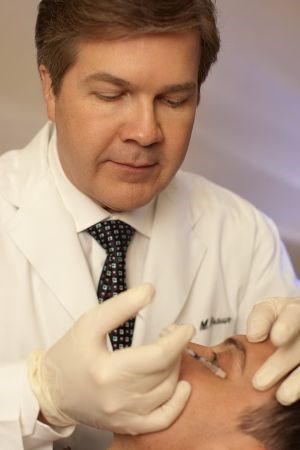
Wikipedia, M Braun, CC By-SA 2.0
The bacterium Clostridium botulinum produces a poison so deadly that a few hundredths of an ounce can kill a million people. Small wonder it's one of the most dreaded agents of biological warfare. Yet it is also one of the most widely used therapeutic drugs, at least in domesticated form known as Botox. Originally developed for the treatment of uncontrollable blinking, Botox is now used to help treat some 40 ailments ranging from crippling diseases such as cerebral palsy and Parkinson's to less than life threatening troubles like facial wrinkles and excessive sweating. It may even ease migraines for some people.18
Final Observation
Was Friedrich Nietzche thinking of hydrogen sulfide and other toxins when he said, “That which does not kill us makes us stronger?”3
References
1. Cathy Newman, “12 toxic tales,” National Geographic, 207 (5), 2 (2005).
2. Victoria Gill, “Silent killer as treatment for heart and lung disease,” chemistryworld.com, September 20, 2006.
3. Michael D. Shaw, “Hydrogen sulfide: yes, it's nasty,” HealthNewsDigest.com, October 23, 2018.
4. Mary Roach, Gulp: Adventures on the Alimentary Canal, W.W. Norton & Company, New York, NY (2013).
5. Guangdong Yang, et al., “H2S as a physiologic vasorelaxant: Hypertension in mice with deletion of cystathionine -lyase,” Science, 322 (5901), 587-590 (October 24, 2008).
6. C. Djerassi, NO, Penguin Random House, 1998.
7. A.K. Taylor, “Nitric oxide - from pollutant to product,” Chemical Innovation, 30, 41 (April 2000).
8. David March, “Hydrogen peroxide vapor enhances hospital disinfection of superbugs,” Johns Hopkins Medicine, December 31, 2012; https://www.hopkinsmedicine.org/news/media/releases/hydrogen_peroxide_vapor_enhances_hospital_disinfection_of_superbugs
9. Jennifer S. Holland, “The bite that heals,” National Geographic 223 (2), 64 (2013).
10. Jennifer Tsang, “Dogs stick their noses in everything, but many people believe their saliva is beneficial,” massivesci.com, July 9, 2018.
11. Thomas J. Moore, Deadly Medicine: Why Tens of Thousands of Heart Patients Died in America's Worst Drug Disaster, Simon & Schuster, New York, NY (1995).
12. Helen Thompson, “Frog slime protein fights off flu,” sciencenews.org, May 13, 2017.
13. John Emsley, Molecules at an Exhibition: Portraits of Intriguing Materials in Everyday Life, Oxford University Press (1998).
14. “Spider venom reveals seven promising compounds with the potential to relieve chronic pain,” healthnewsdigest.com, March 4, 2015.
15. Alex B. Berezow, “Tilapia: a fish that will heal your wounds,” acsh.org, February 17, 2015.
16. Mario Aguilera, “Compound discovered at sea shows potency against anthrax,” scipps.ucsd.edu/news, July 17, 2013.
17. R.E. Gallagher, “Arsenic- New life for an old portion,” New England Journal of Medicine, 339, 1389-1391 (November 5, 1998).
18. Susan Freinkel, “New remedies from old poisons,” Discover, 23, 48, (July 2002).
About the author

Jack Dini earned a Bachelor of Metallurgical Engineering degree from Cleveland State University and began his career in the 1950s with Cleveland Supply Co. (now Pavco). He spent a few years at Republic Steel's research center and Battelle Columbus Laboratories. In 1962, he joined Sandia Laboratories, Livermore, CA, where he was involved with electrodeposition projects for 18 years before moving to Lawrence Livermore (LLNL) in 1980. He was section leader, fabrication processes. Responsibilities included direction of activities in five groups: electroplating and metal finishing, vacuum processes, metal fabrication, plastics and optics.
Mr. Dini is a prolific scientist. He is the author or coauthor of some 180 technical papers and, while many researchers are content to specialize in one or two fields, he made significant contributions to more than half a dozen disciplines in surface finishing. He is the author of two books, Electrodeposition- The Materials Science of Coatings and Substrates, and Challenging Environmental Mythology: Wrestling Zeus. The scientific community is fortunate that he carefully documented his work, sharing it with others around the world. It includes plating uncommon metals, alloy plating, printed circuits, chemical milling, electrojoining and gathering electrochemical/property data.
Related Content
Finishing High Reliability, Function Critical Parts
From safety critical automotive and aerospace components to lifesaving medical micro-components and implantable devices, Indiana-based Electro-Spec finishes applications that require zero failure rates.
Read MorePrecision Coating Receives ISO 14001 Certification
The company says its commitment to the environment and its health led it to seek this certification.
Read MoreSilica-free Abrasive Compounds Offer Improved Health, Safety
Osborn has a line of silica-free abrasive compounds that offer both employee and environmental benefits.
Read MoreEngineered Coatings Offer Improvement for Medical Device Manufacturers
Diamond electroless nickel coating provides better lubricity and improved wear resistance for molds, resulting in better quality and productivity.
Read MoreRead Next
A ‘Clean’ Agenda Offers Unique Presentations in Chicago
The 2024 Parts Cleaning Conference, co-located with the International Manufacturing Technology Show, includes presentations by several speakers who are new to the conference and topics that have not been covered in past editions of this event.
Read MoreDelivering Increased Benefits to Greenhouse Films
Baystar's Borstar technology is helping customers deliver better, more reliable production methods to greenhouse agriculture.
Read MoreEducation Bringing Cleaning to Machining
Debuting new speakers and cleaning technology content during this half-day workshop co-located with IMTS 2024.
Read More





















